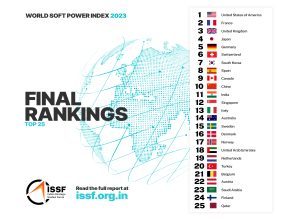The UK’s inflation rate has been a rollercoaster, with prices rising at a rate of 7.9% in the year to June, down from 8.7% in May. While this decrease might seem like a positive sign, the underlying factors are more complex.
Food inflation, particularly on items like sugar, olive oil, and cooking sauces, has slightly come down but remains alarmingly high at 17.3%. In my opinion, this is indicative of systemic issues in the supply chain and global market dynamics that are not easily resolved.
The Bank of England’s Response: Is It Enough? The Bank of England has aggressively increased interest rates 14 times to 5.25% to slow down price rises. While this traditional approach may seem logical, I believe it’s worth questioning whether this is the most effective method given the unique circumstances we face today. Global energy prices and other factors beyond the Bank’s control may render these interest rate hikes less effective.
Measuring Inflation: A Moving Target The Office for National Statistics (ONS) tracks the prices of everyday items in an imaginary “basket of goods,” constantly updating it to reflect shopping trends. The Consumer Prices Index (CPI) is the main measure, and it was 7.9% in the year to June. Core inflation, which excludes energy, food, alcohol, and tobacco, was 6.9% in June. These numbers are concerning, and in my view, they reflect a broader economic instability that requires a multifaceted approach.
Why Are Prices Rising So Fast? The reasons for the rapid price rise include soaring food and energy bills, increased demand for oil and gas post-Covid, and the war in Ukraine affecting availability. These factors are complex and intertwined, and I believe that the UK government needs to take a more comprehensive approach to address these issues, rather than relying solely on interest rate adjustments.
The Impact of Raising Interest Rates Raising interest rates is a double-edged sword. While it may slow down inflation, it also makes borrowing more expensive and can lead to job cuts. The current rate of 5.25% is a significant increase, and in my opinion, the potential negative impacts on businesses and individuals should not be underestimated.
Wages and Inflation: A Growing Gap Many people’s pay isn’t keeping up with rising prices, with real pay falling by 0.6%. This is a deeply concerning trend, and I believe that both government and businesses must work together to ensure that wages reflect the cost of living.
When Will Inflation Go Down? Predictions vary, with the Bank of England expecting a drop to 5% by the end of 2023. However, the uncertainty in these predictions reflects a lack of confidence in the economic landscape. In my view, a more aggressive and diversified strategy may be needed to stabilize the economy.
A Global Perspective The UK is not alone in facing inflation challenges. The eurozone and the US are also grappling with similar issues. The global interconnectedness of these problems suggests that international cooperation and a shared understanding of the underlying causes may be essential.



